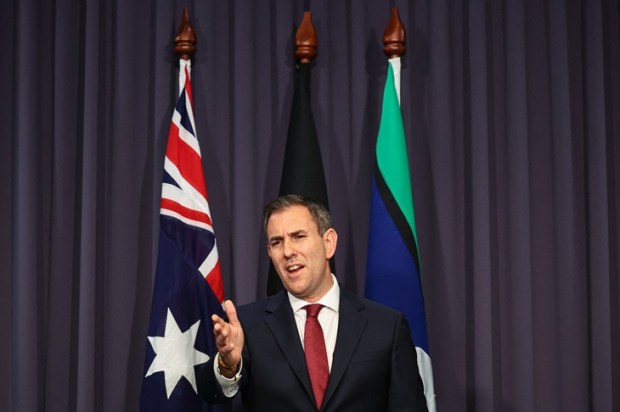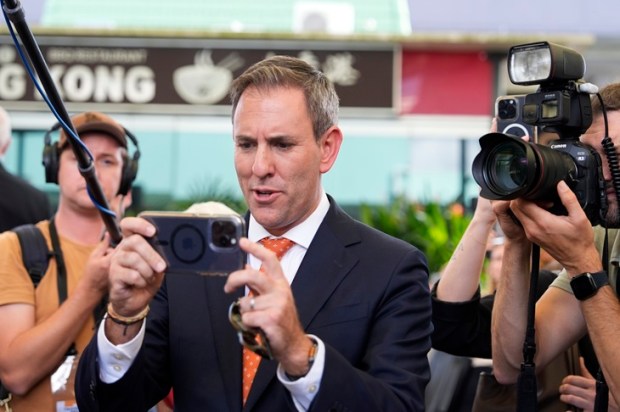Jim Chalmers has pressed ahead with ‘Division 296’, a banal-sounding name for one of the most pernicious taxes considered in Australia.
Division 296 would impose a tax on unrealised gains earned on superannuation balances above $3 million. This threshold is not indexed or benchmarked to the market. The tax rate would be 30 per cent. For these reasons, the tax hike especially impacts younger Australians.
Jim Chalmers has spun this as a small tax that would only impact very wealthy Australians. However, when you actually dig into the mechanics, it is designed to impact all Australians, is retroactive in effect, and sets a dangerous precedent. So much so, that it will hike taxes by $7 billion every single year in a decade.
People are finally waking up, thanks in no small part to Geoff Wilson, of Wilson Asset Management, who has been leading the campaign against the tax grab. So, let’s explore why it is so controversial and why it is so harmful for younger Australians.
The problems with Division 296 and the tax on unrealised capital gains
It will impact everyone, not just the wealthy: The most obvious issue is that this imposes yet more Bracket Creep: Division 296 is designed to catch all Australians! The weasel words about it only impacting the big end of town are duplicitous and misleading.
Let’s look at the $3 million threshold. Jim Chalmers bills this as only impacting a small number of Australians. This is absurd. Suppose an 18-year-old will retire in 50 years. Then, by the time he/she retires, then at an inflation rate of 2.5 per cent, $3 million now is equivalent to only $875k then. But, it gets worse. Suppose the investment return is 10 per cent pa, based on a portfolio of both ASX200 and S&P500 stocks. Then, that $3 million is equivalent to only $25k.
What about illiquid assets? It is not uncommon for large superannuation balances to be concentrated in illiquid assets, such as [farm] land, or unlisted companies. For example, suppose an investor has devoted part of their portfolio to early-stage startups. Now suppose one of them were Canva. Canva is not listed. An investor in Canva cannot easily liquidate their holdings. But, under Div 296, the unrealised gains on Canva would be deemed to be ‘earnings’ and taxed at 30 per cent. How then is this supposed to be paid?
The net result is to discourage the use of superannuation to invest in venture capital, including in venture capital funds. This starves Australia’s already struggling venture ecosystem of capital.
Reduced faith in the super system and in government: Investors devoted money to superannuation funds based on the rules that existed. However, Division 296 is a retroactive tax. It applies to existing investments, imposing an additional tax on money that people locked into superannuation on the representation that the tax rate was a certain amount. Division 296 – via its tax on unrealised capital gains – effectively becomes a mechanism to expropriate the assets that people have stored in superannuation. The net result is a reduced trust in the superannuation system and other government-linked financial scheme.
Bad precedent: Extremely troubling precedent involving a tax on unrealised capital gains. Once the precedent is set, this can clearly expand either outside of super or into all super balances. This is not a far-fetched fear because the rhetoric surrounding Division 296 has no limiting principle. Rather, the rhetoric is ‘some people have a lot of money, let’s increase taxes on them’. Why would one believe that the government would not subsequently salami slice the policy into other areas once the precedent is set.
When we add this together, we see that Div 296 is inherently ‘unfair’, sets a bad precedent, and should be junked. The rhetoric surrounding high-income earners is intellectually dishonest: the top 1 per cent pay around 20 per cent of all taxes (According to the AFR). If we are talking about paying their fair share, the impacted people already have.
What we should do instead
Let’s consider an alternative. How can we have a win-win: let people keep more of their money while also raising more revenue?
The clear solution is a recalibration of capital gains tax for all investments, not just superannuation. Set short-term CGT at 20 per cent and long-term CGT at 15 per cent, hypothetically. The lower the better. Apply this to earnings (not gains) on superannuation balances. Apply the higher rate to any investment made after the rule-change. Apply the prior rate to any investment made before the rule-change. This new CGT rate must apply to all investments otherwise it simply becomes a tax hike. CGT must be untehtered from income tax.
Why would this work:
- It would encourage more transactions. Instead of people waiting a year and a day to get the long-term capital gains tax discount on stocks and other investments, they could transact whenever they choose. The incentive to wait one year would be lower. This would ramp up trading volume, thereby raising revenue. It would also enable people who put in the work, or take the risk, to keep more of their own money.
- The slight increase in CGT on superannuation funds would also raise more revenue. Notably, this would not be a retroactive tax or a tax on unrealised gains. It would only apply to actual realized gains or earnings. The new rate would only apply to new investments and not to previous investments.
- It would deter capital flight to the United States. Australia needs more investment. Australia needs more growth. This growth can help to pay for government spending programs. But, the growth slows whenever government starts taking a larger slice of it to fund out of control spending.
This proposal would enable the government to both raise more revenue and enable people to keep more of their own money. This is a win-win.
Let’s also be clear: any treasury modelling of this must account for both the increased trading and transactions that would raise from lower CGT and the incentive effects from the lower CGT. Modelling that fails to account for these upsides is simply misleading and erroneous.
Jim Chalmers could be the Treasurer that delivers genuine growth, and tax cuts, and more revenue. However, one fears that Jim Chalmers believes that if your policy is to rob Peter to pay Paul, you can always count on the vote of Paul. Hopefully, Jim Chalmers recalibrates and ushers in an era of optimism.

























